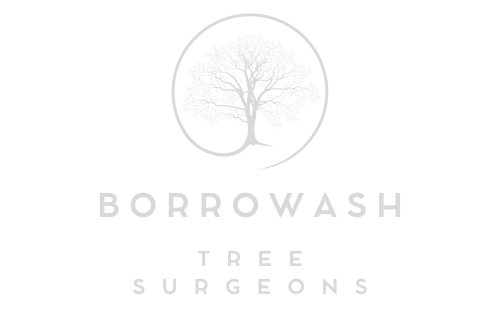Maximising Harvests: Tree Trimming for Fruit Production
Introduction: Fruit trees are beautiful additions to any landscape and provide a bountiful harvest of delicious fruits when properly cared for. Tree trimming ensures optimal fruit production by promoting healthy growth, maximising sunlight exposure, and enhancing airflow within the canopy. At Borrowash Tree Surgeons, we understand the importance of tree trimming for fruit production, and in this blog post, we’ll share valuable tips and tricks to help you achieve abundant yields from your fruit trees.
1. Start with a Solid Foundation
Before diving into specific trimming techniques, laying the groundwork for healthy fruit production is essential. This includes:
- Choosing the Right Variety: Select fruit tree varieties well-suited to your climate and growing conditions. Consider factors such as chill hours, disease resistance, and pollination requirements.
- Planting in the Right Location: Ensure your fruit trees are planted with adequate sunlight, good drainage, and sufficient space for growth. Avoid planting trees too close to structures or other trees, hindering airflow and sunlight penetration.
- Proper Pruning from the Start: Begin pruning your fruit trees early to establish a strong framework of branches and encourage balanced growth. This sets the stage for future fruit production and makes subsequent trimming more manageable.
2. Timing is Key
Timing is crucial when it comes to tree trimming for fruit production. The best time to trim fruit trees depends on the specific type of tree and your pruning goals:
- Winter Pruning: Many fruit trees benefit from winter pruning while dormant. Pruning during this time promotes vigorous spring growth and reduces the risk of disease transmission. However, avoid pruning apricots and cherry trees in winter, as they are susceptible to bacterial infections.
- Summer Pruning: Summer pruning is ideal for shaping and maintaining fruit trees and controlling excessive growth. Pruning in summer allows you to remove water sprouts, suckers, and other unwanted growth without impacting fruit production.
3. Focus on Fruit-Bearing Wood
When trimming fruit trees, prioritise the removal of non-productive or low-performing branches to redirect energy into fruit production. Focus on maintaining a balance between vegetative growth and fruit-bearing wood by:
- Thinning the Canopy: Remove overcrowded or crossing branches to allow sunlight to reach all parts of the tree and promote even fruit ripening.
- Removing Water Sprouts and Suckers: These vigorous, vertical shoots divert energy away from fruit production and should be pruned regularly.
- Pruning for Airflow: Open up the canopy to improve airflow and reduce the risk of fungal diseases such as powdery mildew and brown rot.
4. Consideration for Specific Fruit Trees
Different fruit tree varieties may require unique trimming techniques to maximise fruit production:
- Apple Trees: Prune apple trees to encourage an open centre and remove vertical shoots (“water sprouts”) to promote fruit-bearing spurs.
- Peach Trees: Prune peach trees to maintain an open canopy and remove old, unproductive wood to stimulate new growth and fruit production.
- Citrus Trees: Citrus trees benefit from minimal pruning, focusing on removing dead or diseased wood and shaping the canopy to improve airflow.
5. Monitor and Adjust
Regularly monitoring your fruit trees is essential to assess their health, growth, and production. Make adjustments to your trimming techniques as needed based on observations such as:
- Fruit Set: Evaluate the number of blossoms and young fruit developing on the tree to determine if further pruning is necessary to thin the crop and improve fruit size and quality.
- Branch Growth: Monitor the growth of branches and shoots to identify areas of excessive growth that may require pruning to maintain balance and prevent shading of fruit-bearing wood.
- Disease and Pest Pressure: Keep an eye out for signs of disease or pest infestations and address them promptly through targeted pruning or other appropriate measures.
Conclusion: Tree trimming is a valuable tool for enhancing fruit production and maintaining the health and vigour of fruit trees. Following these tips and tricks from Borrowash Tree Surgeons, you can maximise harvests and enjoy a plentiful supply of delicious fruits from your trees.
Call us on: 01332 215 097
Click here to find out more about Borrowash Tree Surgeons
Click here to complete our contact form and see how we can help with your tree’s needs.

